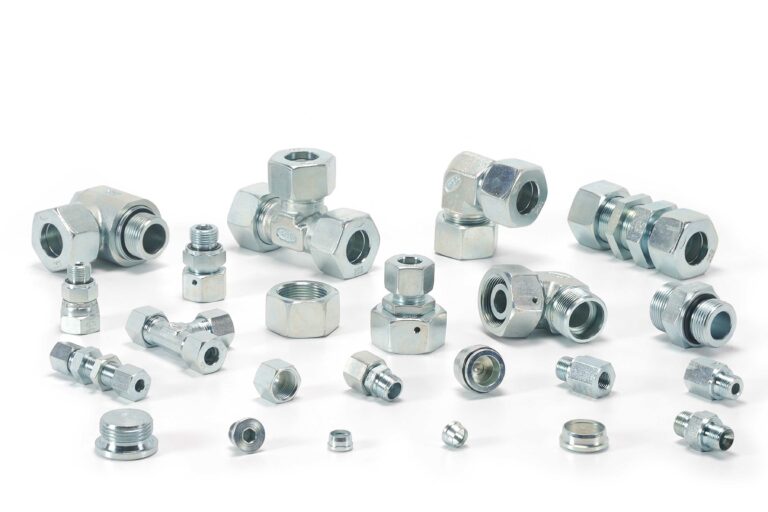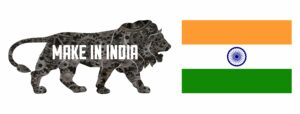Things To know about Hydraulic Fittings and Adapters

Hydraulic systems have many components, such as oil reservoir (tank), pump, motor, valves, cylinders, accumulators, etc… All these components must be connected to allow the pressurized fluid to flow through them. These components are connected with each other using seamless tubes, pipes or hoses. Most commonly, hoses are used to make the overall design more compact and flexible. These connections must be properly configured and secured with the help of fittings and adapters. This blog contains more information about hydraulic adapters and fittings.
Are hydraulic adapters and fittings the same? What are the differences between adapters and fittings?
The basic functions of adapters and fittings are nearly identical. The fittings in the hydraulic systems can prevent oil leakage and pressure fluctuations by ensuring fluid flows safely. These fittings can change the flow direction and even diversify it. The only difference between adapters and other types of fittings is that they can connect different thread sizes together. Adapters can also be used by meeting the various international standards ISO, SAE, DIN, JIS etc.
What are the key parameters to consider when selecting an adapter or fitting? When selecting a component, you must consider the following key aspects: pressure rating, pressure spikes, hydraulic flow rate, compatibility with the environment, temperature, vibrations if any in the system, compatibility with media and of course availability. Leakage is the main concern if you do not follow the proper assembly process.
Hydraulic Fittings
A fitting is a metallic piece that connects tubes and hoses into hydraulic systems. Hydraulic fluid will flow safely and remain within the conductor with a well-placed fitting. The right fitting can also be used to create split flow, alter the flow direction, and even alter the elevation of lines.
A fitting assembly consists of a body, a coupling nut and a ferrule (Cutting ring or sometimes referred to as progressive ring also)
These accessories are small and strong, usually made from machined or forged steel.
Hydraulic Adapters
Hydraulic adapters are used to connect different thread sizes and types. Sometimes adapters can also be used as fittings. However, there are always exceptions.
Adapters can be male-male or male-female, female-female etc.
Next is categorizing according to the material of construction. For adapters and fittings, the most commonly used materials are steel, stainless steel and brass.
What Are The Various Types of Hydraulic Fittings and Adapters?
There are many types of hydraulic adapters and fittings available to meet the needs of different machines. There are many options available for adapters and connections. They can vary based on the type of connection, tube size, port size and type, the material of construction, type of seal, sealing method, thread size and type, and so on. How to Choose the Right Fittings and Adapters?
You now know the difference between a hydraulic adapter and a fitting. This will allow you to choose the right one for your machine. You will first need to choose the right tubes or hoses for your job. Next, you can select fittings and adapters to match the tubes and hoses.
There are three things to consider when choosing an adapter or fitting: the type of fitting, the pressure rating, and the fittings material. You should choose a type of connection that is compatible with the tubes or hoses you are trying to connect. Next, choose a suitable material type. Consider the media you are using in your hydraulic system and ensure that it doesn’t affect the life of fittings or adapters due to corrosion.
What are adapters in a hydraulic system? As we have already mentioned, adapters share similar characteristics to fittings, except that they can be used to connect different types of thread sizes together. You can choose from male-to-male, male-to-female or female. You can use adapters in hydraulic circuits to change thread types or sizes, increase or decrease the size of connections, connect two tube or hose lines into one port, simplify orientation and eliminate stress on couplings and ports.
Why Choose Hyloc for Hydraulic Fittings & Adapters?
We know how frustrating it can be to find the right accessories. We have a team of experts who can help you find the best products.
Hyloc has all the infrastructure necessary to process tube fittings, adapters and flanges, and hydraulic valves as per international standards. The complete infrastructure of Hyloc includes:
- Design and development.
- Genuine raw materials.
- A battery of CNC turning centres with advanced manufacturing technology.
- For higher productivity, a battery of single- and multi-spindle machines.
- Quality control at all levels, from raw materials to the end product, is carried out.
- Our own forge shop produces coupling nuts, elbows, and tees.
- Fully automated, in-house electroplating plant to assure consistent surface treatment quality.
- A unique in-house hydraulic test lab – This lab is able to perform various performance tests according to international standards. It includes leakage tests, proof and burst pressure tests, vacuum tests, pressure impulse and vibration tests, fire tests etc.
Contact us today if you are looking for the perfect fitting or adapter. We can help you find the right fitting or adapter, and we are more than happy to answer any questions you may have about hydraulic connections.
